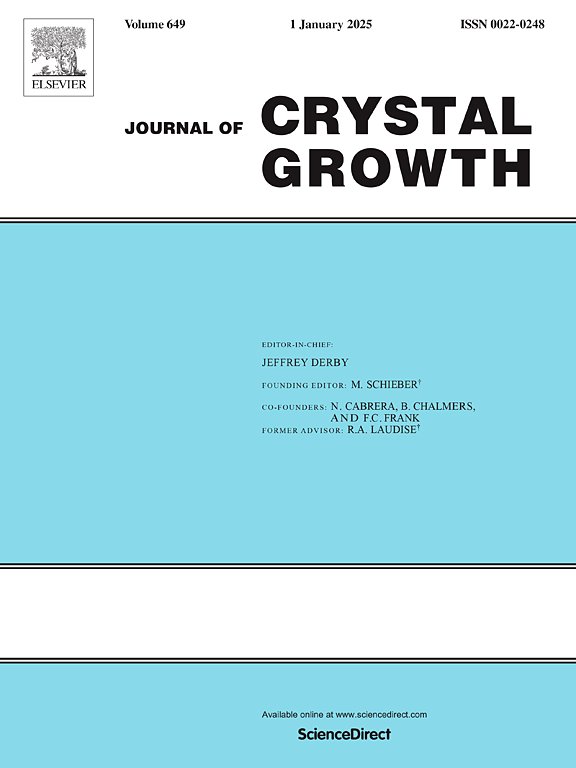Establishment of Multi-Physics coupling model and analysis on thermal stress and crack risk in directional growth of TiAl alloys under electromagnetic confinement
IF 1.7
4区 材料科学
Q3 CRYSTALLOGRAPHY
引用次数: 0
Abstract
The electromagnetic confinement directional solidification (EMCDS) technique is an optimal method for preparing large-size and non-contamination directional TiAl alloy crystals. Despite its advantages, the high temperature gradient inherent to this process induces thermal stress within the ingot, which increases the risk of cracking. To address this challenge, an innovative Integrated Multi-Physics Coupling Model was established to map and study the thermal stress field during EMCDS in this study. It synchronized the computation of the electromagnetic field, temperature field, solute field, flow field, and stress field during the crystal growth of TiAl alloy, and its high accuracy was proved by the micro-indentation experiment. Our analysis reveals that transverse temperature differences are crucial in inducing thermal stresses, and identifies that hot cracks and cold cracks are prone to occur respectively at the area of radial along the sample (X = ) and on the sample surface, which aligns with experimental observations impressively. This model can more accurately and efficiently optimize the process parameters of the EMCDS process to avoid cracks and promote its industrial application.
建立多物理场耦合模型,分析电磁约束下钛铝合金定向生长的热应力和裂纹风险
电磁约束定向凝固(EMCDS)技术是制备大尺寸、无污染定向钛铝合金晶体的最佳方法。尽管该工艺具有诸多优点,但其固有的高温梯度会在铸锭内部产生热应力,从而增加开裂的风险。为应对这一挑战,本研究建立了一个创新的集成多物理场耦合模型,用于绘制和研究 EMCDS 过程中的热应力场。该模型同步计算了 TiAl 合金晶体生长过程中的电磁场、温度场、溶质场、流场和应力场,其高精度得到了显微压痕实验的证实。我们的分析表明,横向温差是诱发热应力的关键,并确定热裂纹和冷裂纹分别易发生在沿样品径向 23R 的区域(X = 23R)和样品表面,这与实验观察结果惊人地一致。该模型可以更准确、更有效地优化 EMCDS 工艺参数,避免裂纹的产生,促进其工业应用。
本文章由计算机程序翻译,如有差异,请以英文原文为准。
求助全文
约1分钟内获得全文
求助全文
来源期刊

Journal of Crystal Growth
化学-晶体学
CiteScore
3.60
自引率
11.10%
发文量
373
审稿时长
65 days
期刊介绍:
The journal offers a common reference and publication source for workers engaged in research on the experimental and theoretical aspects of crystal growth and its applications, e.g. in devices. Experimental and theoretical contributions are published in the following fields: theory of nucleation and growth, molecular kinetics and transport phenomena, crystallization in viscous media such as polymers and glasses; crystal growth of metals, minerals, semiconductors, superconductors, magnetics, inorganic, organic and biological substances in bulk or as thin films; molecular beam epitaxy, chemical vapor deposition, growth of III-V and II-VI and other semiconductors; characterization of single crystals by physical and chemical methods; apparatus, instrumentation and techniques for crystal growth, and purification methods; multilayer heterostructures and their characterisation with an emphasis on crystal growth and epitaxial aspects of electronic materials. A special feature of the journal is the periodic inclusion of proceedings of symposia and conferences on relevant aspects of crystal growth.
 求助内容:
求助内容: 应助结果提醒方式:
应助结果提醒方式:


